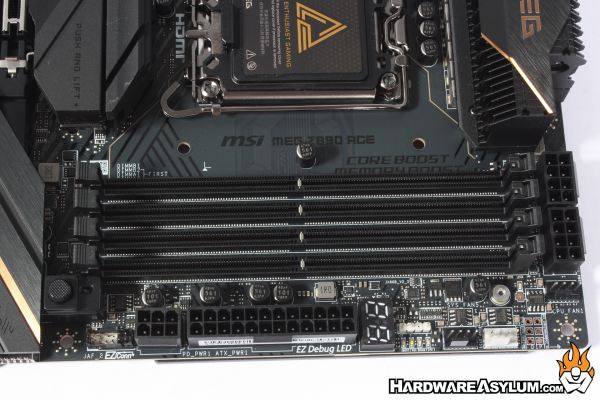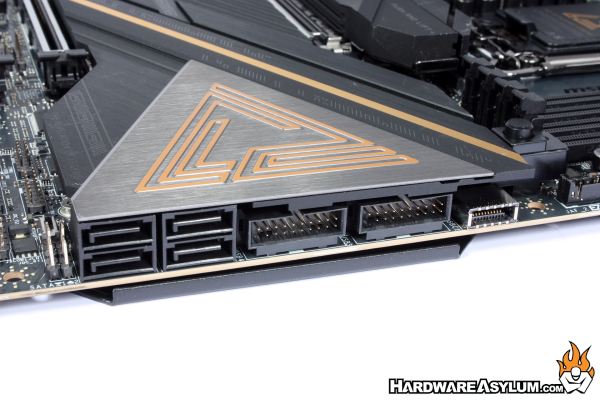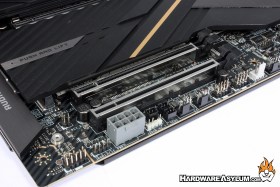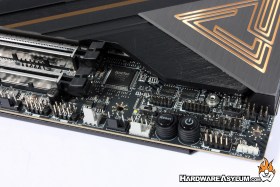MSI MEG Z890 ACE Motherboard Review
Author: Dennis GarciaBoard Layout and Features Continued
Dual channel memory comes standard on the Arrow Lake processor and the Maximus Z890 Extreme supports standard speed DDR5 modules up to and beyond 9200+ Mt/s. This will depend on your module of choice and processor quality but, be humbled in that the board can handle it. A maximum of 256GB is addressable with the proper module density.

I was able to test memory quite extensively on the MEG Z890 ACE and found that my processor was quite good supporting 8200 MT/s with two sticks installed. I suspect this will go higher but, that will be a story for another review. It is very well known that memory speed will need to be reduced once you add more than two memory sticks so be prepared to do some manual tuning under these situations.
As an avid overclocker I often use motherboards like this on an open test bench, it is how I do my reviews and when overclocking with LN2 or my Single Stage Phase it makes no sense to have a motherboard in a chassis. This is where having benchtop controls comes in handy for quick reboots, memory resets and post code monitoring is key.
You will find a handy POST Debug LED near the memory sockets along with several fan headers, status LEDs and a small block of voltage test points. These work well with standard probes or you could solder in your own pin headers for a more personal touch.
At the bottom of the motherboard you will find an additional PCI Express power connector. These are typically reserved for additional graphics cards however, with the number of M.2 drive slots there is a strong chance that more power will help with stability.
Moving to the lower right of the motherboard you will find benchtop controls for both power and reset, additional fan headers and a number of other connections including more ARGB headers.
Internal SATA connections number four and follow the SATA6 connection standard. Next to the SATA connectors you’ll find two standard USB 3.0 headers along with a single USB 3.2 header which is a very nice way of keeping every cable connection together in the same location.

The power connection is to supplement USB power and ensure that high output ports get the power they need.



